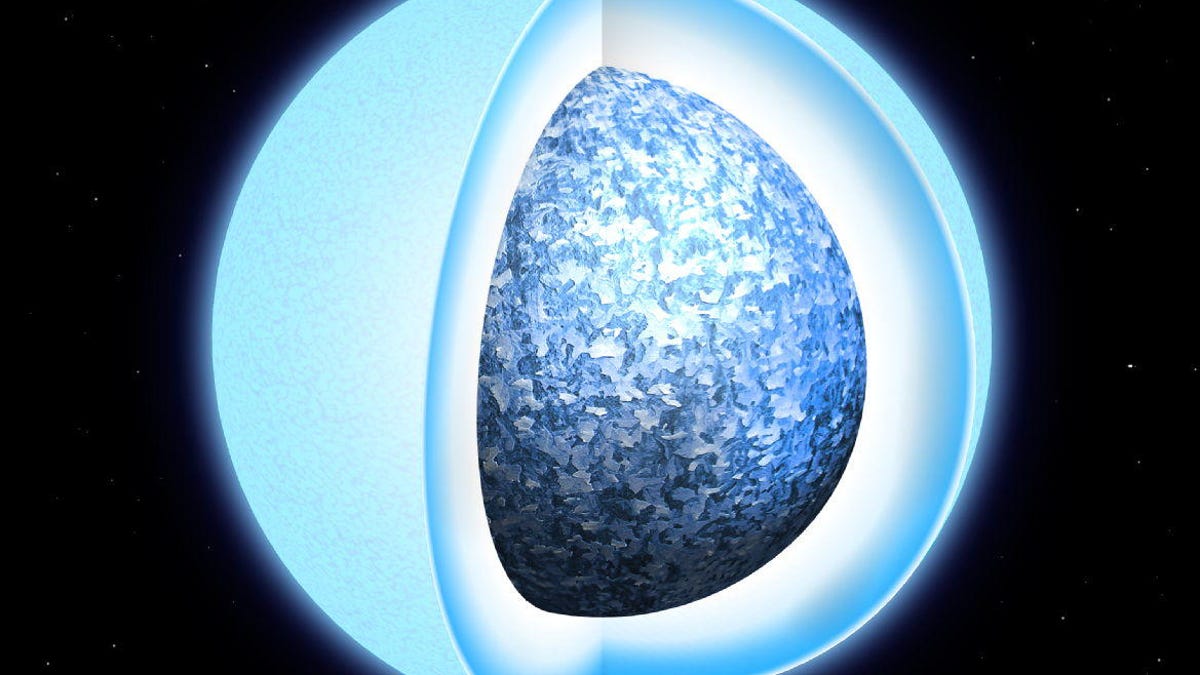Thousands of stars, including the sun, will turn into huge crystals
Long after it's murdered everything we've ever known, our star will become a delicate floating beauty.

A cross-section of a crystallized white dwarf star.
Eventually, the sun will cool off and become a giant crystal floating through space. It's not a bizarre science fiction plot, but the takeaway of new scientific research published this week in the journal Nature.
You may have heard that billions of years down the road the sun will swell to a ravenous red giant star that will eventually swallow Earth. But long after our planet has been ended, the sun will shrink to a cool white dwarf star and then slowly solidify into a massive white crystal, the study says.
That's a lot of bling wasted on the empty vacuum of space.
"All white dwarfs will crystallize at some point in their evolution, although more massive white dwarfs go through the process sooner," Pier-Emmanuel Tremblay from the University of Warwick's Department of Physics in the UK explained in a statement.
"This means that billions of white dwarfs in our galaxy have already completed the process and are essentially crystal spheres in the sky. The sun itself will become a crystal white dwarf in about 10 billion years."
A team of astronomers led by Tremblay analyzed observations of 15,000 potential white dwarf stars within 300 light-years of Earth made by the European Space Agency's Gaia satellite. The work verified earlier predictions that such a catalog of white dwarf stars would reveal a number in the slow process of turning from what is essentially a liquid form to a solid state.
"It was predicted 50 years ago that we should observe a pile-up in the number of white dwarfs at certain luminosities and colors due to crystallization and only now this has been observed," Tremblay explained.
Sometimes death can be beautiful, especially when it comes to stars and other cosmic things. But I still wouldn't mind skipping the part where our entire planet is swallowed in the hellacious heat of a massive nuclear furnace we once called the sun. But that's just me.
NASA turns 60: The space agency has taken humanity farther than anyone else, and it has plans to go further.
Crowd Control: A crowdsourced science fiction novel written by CNET readers.

